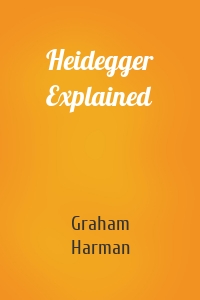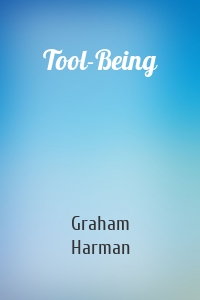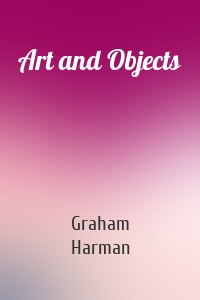Graham Harman
4 кн.
Heidegger Explained
Heidegger Explained is a clear and thorough summary of the philosophy of Martin Heidegger (1889–1976). It gives a fascinating explanation of all stages of Heidegger’s life and career, and shows his entire philosophy to emerge from one simple but profound insight.Many philosophers believe that Heidegger was the greatest philosopher of the twentieth century. His influence has long been felt not just in philosophy, but also in such fields as art, architecture, and literary...
| Автор | Graham Harman |
Tool-Being
Tool-Being offers a new assessment of Martin Heidegger's famous tool-analysis, and with it, an audacious reappraisal of Heidegger's legacy to twenty-first-century philosophy.Every reader of Being and Time is familiar with the opposition between readiness-to-hand (Zuhandenheit) and presence-at-hand (Vorhandenheit), but commentators usually follow Heidegger's wishes in giving this distinction a limited scope, as if it applied only to tools in a narrow sense. Graham Harman contests...
| Автор | Graham Harman |
Guerrilla Metaphysics
In Guerrilla Metaphysics, Graham Harman develops further the object-oriented philosophy first proposed in Tool-Being. Today’s fashionable philosophies often treat metaphysics as a petrified relic of the past, and hold that future progress requires an ever further abandonment of all claims to discuss reality in itself. Guerrilla Metaphysics makes the opposite assertion, challenging the dominant «philosophy of access» (both continental and analytic) that remains quarantined in...
| Автор | Graham Harman |
Art and Objects
In this book, the founder of object-oriented ontology develops his view that aesthetics is the central discipline of philosophy. Whereas science must attempt to grasp an object in terms of its observable qualities, philosophy and art cannot proceed in this way because they don't have direct access to their objects. Hence philosophy shares the same fate as art in being compelled to communicate indirectly, allusively, or elliptically, rather than in the clear propositional terms that are...
| Автор | Graham Harman |





